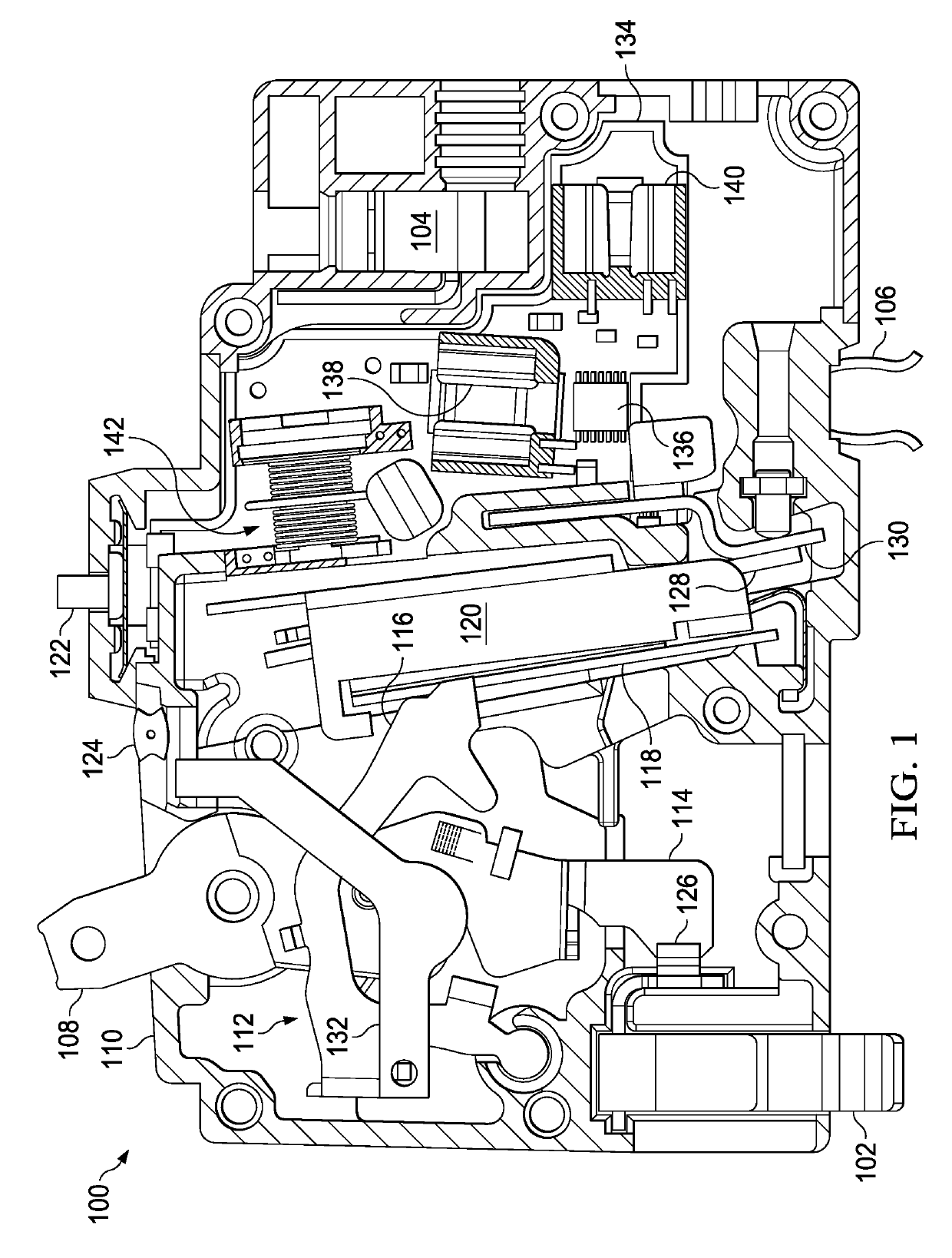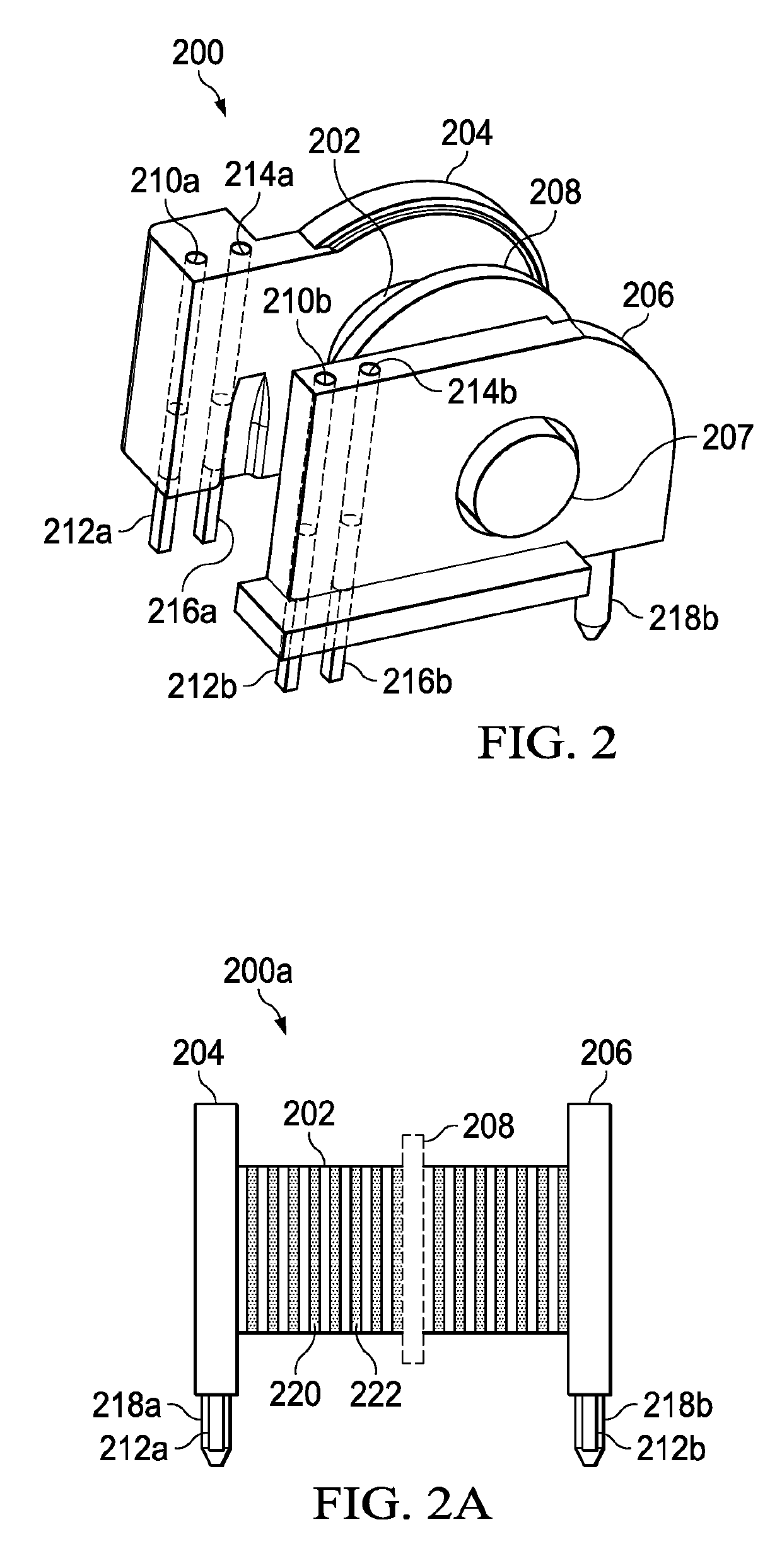Auto-monitoring redundancy for enhanced miniature circuit breaker reliability
a miniature circuit breaker and auto-monitoring technology, applied in the field of miniature circuit breaker, can solve the problems of trip solenoids, inability to actuate the trip mechanism, potent electrical safety hazards, etc., and achieve the effect of minimizing cost and component coun
- Summary
- Abstract
- Description
- Claims
- Application Information
AI Technical Summary
Benefits of technology
Problems solved by technology
Method used
Image
Examples
Embodiment Construction
[0008]At a high level, the embodiments disclosed herein are directed to improved systems and methods for accommodating auto-monitoring in electronic circuit breakers. The systems and methods use circuit redundancy to allow circuit breaker trip solenoids and switching semiconductors to be automatically and periodically tested while still being able to trip the circuit breakers in the event of a ground fault or an arc fault. The circuit redundancy is implemented in a way that uses the same basic circuit breaker layout and volume while minimizing cost and component count. Such an arrangement allows the disclosed circuit redundancy to be deployed in any number of circuit breaker applications, including applications with strict size constraints, such as MCBs.
[0009]In some embodiments, the disclosed circuit redundancy is implemented by providing two or more separate but parallel windings in a circuit breaker trip solenoid and two or more separate but parallel semiconductor switches in the...
PUM
 Login to View More
Login to View More Abstract
Description
Claims
Application Information
 Login to View More
Login to View More - R&D
- Intellectual Property
- Life Sciences
- Materials
- Tech Scout
- Unparalleled Data Quality
- Higher Quality Content
- 60% Fewer Hallucinations
Browse by: Latest US Patents, China's latest patents, Technical Efficacy Thesaurus, Application Domain, Technology Topic, Popular Technical Reports.
© 2025 PatSnap. All rights reserved.Legal|Privacy policy|Modern Slavery Act Transparency Statement|Sitemap|About US| Contact US: help@patsnap.com



